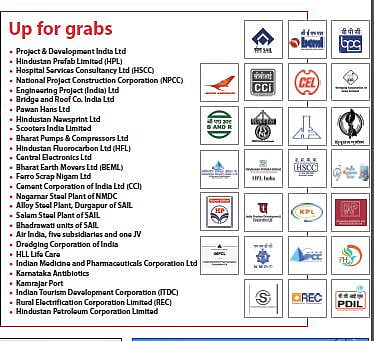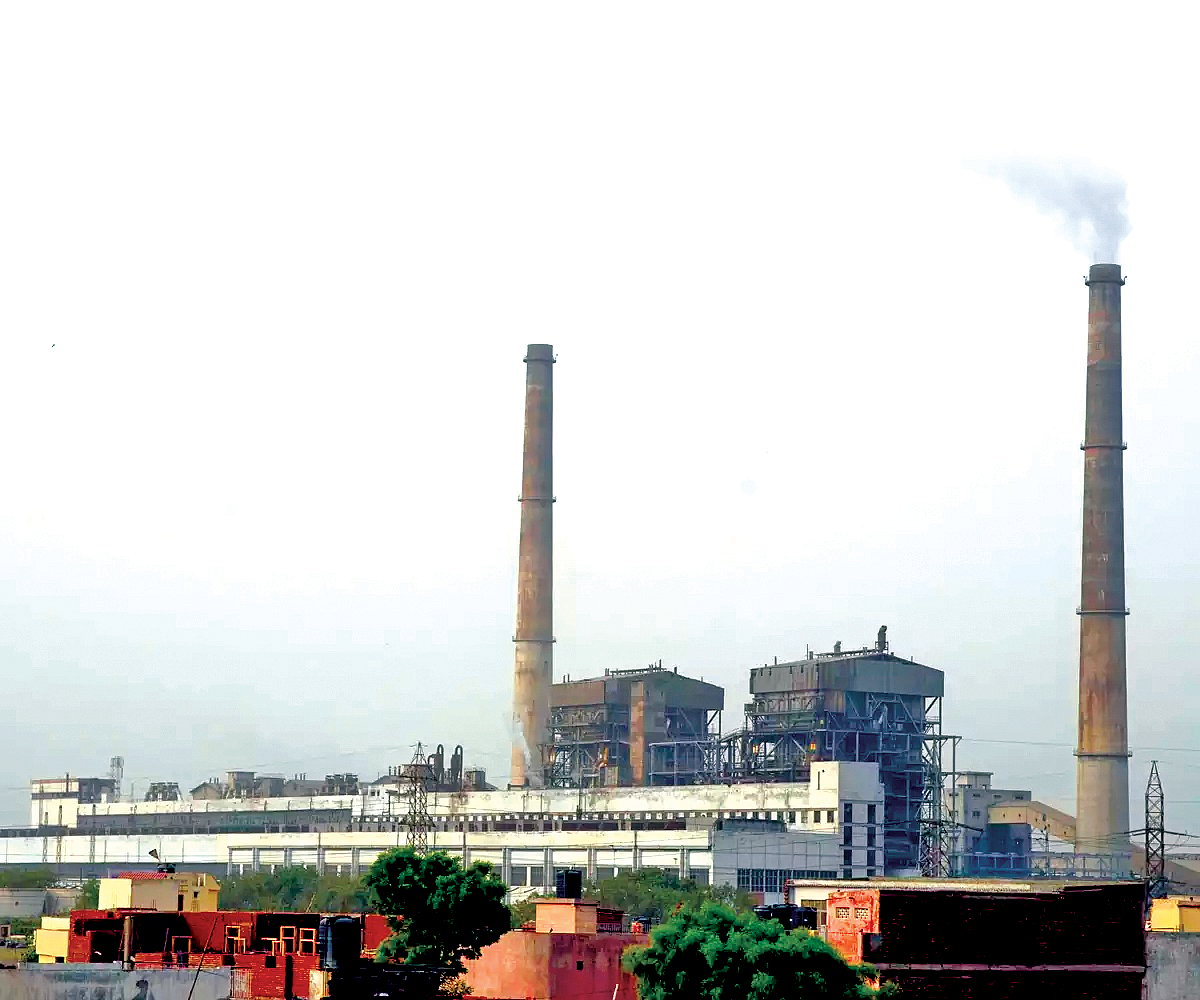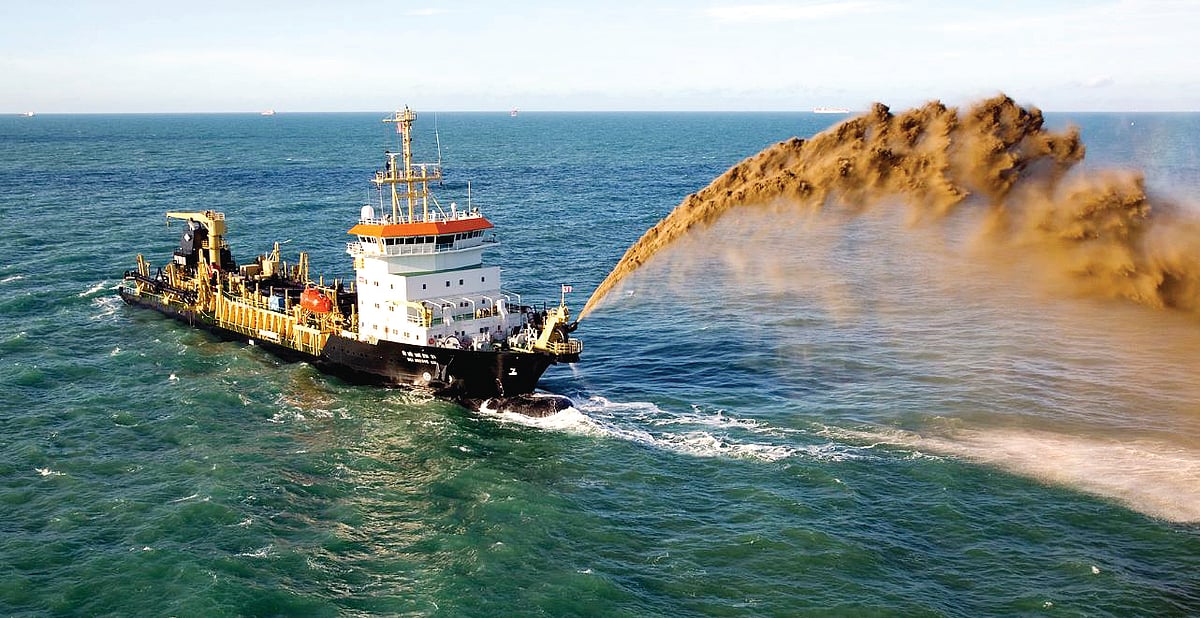PSU divestment: Modi 2.0 sets a scorching pace
The new Narendra Modi 2.0 government has set an ambitious target of ₹1.05 lakh crore through divestment of its stake in various public sector undertakings (PSUs) in the current financial year

The newly elected Narendra Modi 2.0 government has set an ambitious target of ₹1.05 lakh crore through divestment of its stake in various public sector undertakings (PSUs) in the current financial year. Over the next five years, the government aims to raise ₹3.25 lakh crore through strategic stake sale in PSUs. The government, data shows, has raised ₹84,971 crore by the same means in 2018-19 against its stated goal of ₹80,000 crore.
To offset the falling revenue collection following draconian measures like demonetisation and a hasty implementation of GST, the government is looking at offloading its stake in PSUs to bridge the revenue-expenditure gap. The Department of Investment and Public Asset Management website of the government says that between FYs 2014-15 and 2018-19, the government managed to raise almost ₹2.8 lakh crore through the divestment channel.
Seen in this light, the target set for 2019-2024 does not look unrealistic at all. However, how it has been achieved needs to be seen as well. It will be discussed later.
While divestment is certainly not a brainchild of the Modi sarkar, and earlier NDA and UPA governments had also walked that path, the pace at which this has gathered steam ever since 2015 is astounding. Consider the following figures for a comparison. In 2011-12, 2012-13 and 2013-14, the UPA government managed to raise ₹13,894 crore, ₹23,957 crore and ₹15,819 crore against slated targets of ₹40,000 crore, ₹30,000 crore and ₹40,000 crore respectively.
Let’s look at some of the prominent PSUs that are likely to be sold off soon
Three plants of SAIL
According to sources, the bidding process has already been kickstarted for the Durgapur Steel Plant in West Bengal, the Salem Steel Plant in Tamil Nadu and the Bhadravati Steel Plant in Karnataka.
Established in 1973, Steel Authority of India Limited (SAIL)’s revenues in 2018-19 stood at Rs 66,967 crore while as on July 3, 2019, its market cap stood at Rs 21,352 crore. The government holds as much as 75 per cent stake in SAIL while the remaining is in public hands.
Incidentally, the Bhadravati plant made pre-tax profits of ₹116.90 crore, Rs 108.9 crore and ₹75.72 crore in the last three years respectively. The corresponding profit figures for the Durgapur plant stood at ₹33.25 crore, ₹47.46 crore and ₹40.64 crore, post-tax. Incidentally in 2015, the Durgapur plant made profits of ₹134.15 crore. But instead of finding out why profits fell so sharply over an year, the government and the its economic brain, Niti Aayog finalised plans of selling off the plant.
The Salem plant, in the last three years, has made pre-tax profits of ₹235 crore, ₹211 crore and ₹259 crore respectively. So, why is the government hell-bent on selling off profitable units of SAIL?
The recent visit of Jindal Steel and Power Limited chairman Naveen Jindal to the Bhilai Steel Plant has also led to intense speculation whether one of India’s largest and most profitable steel plants was also up for the grabs.
However, Naveen Jindal has said there is “no truth in these speculation” and that he had gone to the Bhilai steel plant to show his son Venkatesh around. In a series of tweets, he said that Bhilai Steel Plant was like a “mandir” for him.
After stations and trains, turn of railway land and coach & engine factories?
Alongside the armed forces, Indian Railways possibly owns the largest land holdings in the country. It is estimated that Railways owns as much as 4,58,588 hectares of land, much of it in prime locations in various cities and towns. Airport Authority of India, Air India too own prime land in various cities and towns.
Union Finance Minister Nirmala Sitharaman, in her maiden Budget speech, has already made it clear that the government will turn to private investment to develop these lands. To develop railway stations on a PPP model, already the Indian Railway Station Development Corporation has been set up. After Habibganj Railway Station has been formally announced, sources in the Railways say more than 300 railway stations across the country have been identified. The sources add that railway land in prime locations will be leased out to private entities to set up hotels, commercial buildings, food plaza, malls, etc.
The government has already decided to hand over trains like Rajdhani and Shatabdi to private operators on a revenue sharing model. The Railway Board has already presented this roadmap at a top-level meeting with officials. This is apparently Railway Minister Piyush Goyal’s brainchild. The Railway Board, sources say, will invite expressions of interest from private players within the next 100 days.
In the name of technological expansion, even the flagship engine and coach manufacturing facilities of Indian Railways are being prepped for a private takeover. The last few years have seen thousands of crores pumped into these factories to bring them up to speed with the latest technology vis-à-vis automation, etc. Incidentally, coaches for metro rail and the Bande Bharat trains have been manufactured in these very factories. The ones which will go up on the block for sale are Chiitaranjan Locomotive Workshop, West Bengal; Integral Coach Factory, Tamil Nadu; Diesel Locomotove Workshop, Uttar Pradesh (Varanasi); Modern Coach Factory ,Uttar Pradesh (Rae Bareli); Rail Coach Factory, Punjab (Kapurthala) and two more.

Stake sale by any means
The Modi government’s disinvestment differs from that of all previous governments in a few fundamental ways. Here they are:
Cash rich PSEs to the rescue
In case the government does not find takers for some of the 35 PSUs selected for sale, the government has a different game plan where cash-rich central public sector enterprises (CPSEs) will come to the rescue of the government’s strategic stake sale programme. This is to offset the tepid interest of the private sector to take over controlling interest in some of these sick and loss making companies.
However, this is a strategy that may even put the balance sheets of profitable CPSEs in jeopardy. ONGC was a debt free company till it had to buy government’s entire share in Hindustan Petroleum Corporation Limited. Now the company is not only left with about ₹14,000 crore of debt but its cash and bank balance plummeted to a mere ₹ 167 crore in September 2018, down from ₹9,511 crore just over a year back.
Exchange-traded funds
Exchange-traded funds (ETFs) are likely to be the mainstay of the disinvestment programme in FY 2019-20 as it contributed 53 per cent of the disinvestment receipts in FY 2018-19. DIPAM raised as much as ₹45,080 crore during 2018-19 from CPSE ETF and Bharat-22 ETF.
Buyback of shares
Another easy route to disinvestment is share buyback. As many as 11 CPSEs were asked to buyback the shares in accordance with the capital restructuring guidelines laid down by the Department of Investment and Public Asset Management. The buyback of shares by 11 CPSEs fetched ₹10,669 crore in FY 2018-19. Indian Oil Corporation (IOC) led the buyback by acquiring shares worth ₹4,435 crore. Others include Oil and Natural Gas Corporation (ONGC), Bharat Heavy Electricals Limited (BHEL), NLC India Limited, Oil India, Coal India, National Mineral Development Corporation (NMDC), NHPC and National Aluminium Corporation.
Sale of non-core assets such as the land
One new instrument of disinvestment is the sale of non-core assets of Public Sector Enterprises (PSEs) to unlock wealth. Niti Aayog has identified non-core assets of various PSEs, both healthy and sick ones, that could be put on the block. The list includes land and industrial plants of state-owned enterprises mentioned above in addition to NTPC (Badarpur Power Plant, 400 acres), Cement Corporation of India, Bharat Earth Movers Ltd and Steel Authority of India Ltd.

100 Days: Airports, Air India, Pawan Hans
On June 3, the Modi government handed over control of three airports – Ahmedabad, Lucknow and Mangalore – to Adani Enterprises Limited. The ones at Thiruvananthapuram, Guwahati and Jaipur are also to be handed over soon. However, this is likely the trailer of what is to come. Sources say over 50 airports in the country have been identified. As part of the government’s vaunted “100-day agenda”, much publicised by Niti Aayog, these will be handed over to private bidders along with Air India, helicopter service provider Pawan Hans, etc. Apparently foreign operators will be allowed to bid for Air India. The Modi government has, in the past, invited bids for India’s ailing national carrier. However, the response has been lukewarm owing to Air-India’s huge liabilities.
What’s cooking at BSNL, MTNL?
The Modi government had planned for a stake sale in BSNL way back in 2017 but the entry of Reliance Jio as a total disruptor upset the entire equation. Falling profits and market share since then has dimmed the prospects of a successful sale. Thus, the Modi government has decided to try a different route.
The Department of Telecom has now planned to pursue and lead the phased monetisation of assets of BSNL and MTNL. DIPAM has been asked to actively facilitate the entire process and the monetisation plan has been entrusted to the Niti Aayog CEO. The proceeds of monetisation would be utilised for funding a massive VRS scheme (read layoff) and servicing the debt of the two PSUs. BSNL and MTNL employ 1.76 lakh and 23,000 respectively. Their debts are upwards of ₹15,000 crore and ₹20,000 crore respectively.
Again, liquidation of land holdings is likely to play a key role in the revival. Land monetisation is being seen as an option to acquire funds to address the cash crunch that BSNL and MTNL are suffering from. The telcos hold a large number of properties across the country, with many of its offices and exchanges housed in prime locations. The Modi government had already on March 8, 2019, sold off the Centre’s entire 73.47 per cent stake in Dredging Corporation of India to a consortium of four ports. It had announced the execution of the share purchase pact at that point of time.
The government apparently netted ₹1,049 crore by this strategic sale. With this, the entire 73.47 per cent holding of the government in DCI was transferred to four ports - Vishakhapatnam Port Trust (19.47 per cent), Paradeep Port Trust (18 per cent), Jawaharlal Nehru Port Trust (18 per cent) and Deendayal Trust (18 per cent).
The Modi government also plans to totally exit Indian Tourism Development Corporation by selling its entire 87 per cent stake.
How many on the bidding block?
DIPAM has reportedly drawn up plan for strategic sale in 35 PSUs, including those mentioned above, Air India subsidiary AIATSL, Dredging Corporation, BEML, Scooters India, Bharat Pumps Compressors, Indian Drug and Pharmaceuticals Ltd (IDPL), etc. It should be noted here that companies such as Scooters India, IDPL and a few others are also sitting on huge tracts of land in Hardwar, Lucknow and several other places.

Follow us on: Facebook, Twitter, Google News, Instagram
Join our official telegram channel (@nationalherald) and stay updated with the latest headlines
Published: 04 Aug 2019, 11:30 AM
